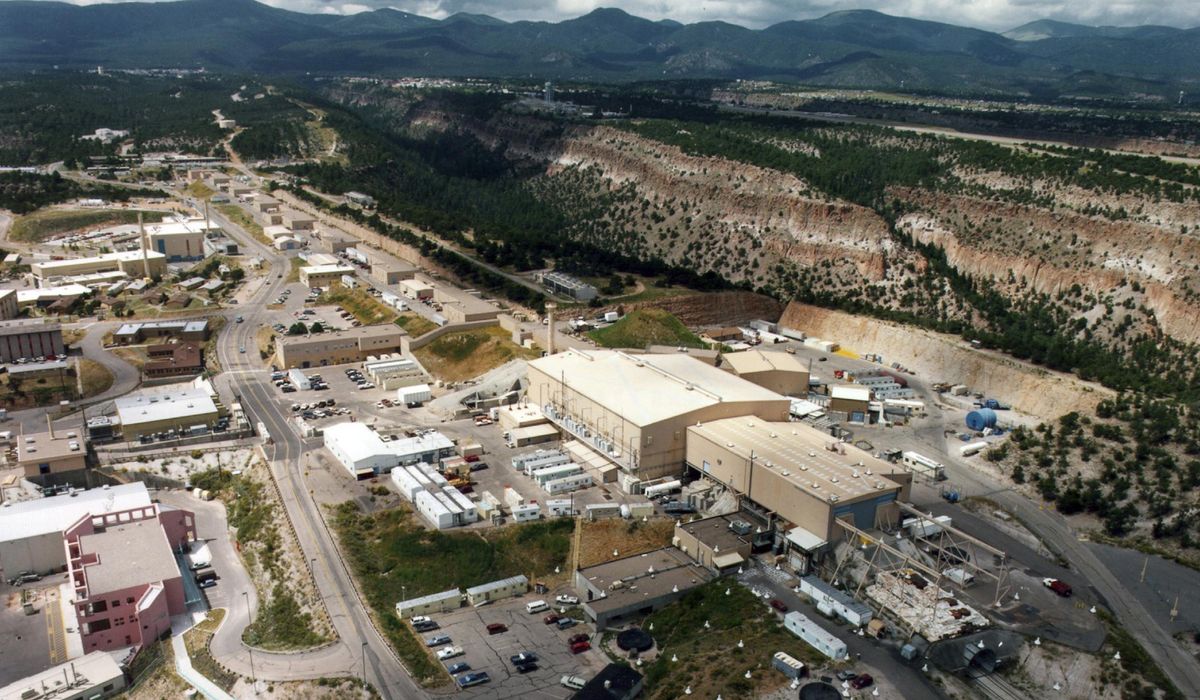


The warplane-dropped nuclear gravity bomb known as the B61 has been fully modernized with a new precision guidance system, the Energy Department’s National Nuclear Security Administration, or NNSA, announced this week.
The B61-12 replaces several earlier variants of the bomb after more than a decade of life-extension work costing $9 billion. An estimated 500 of the nuclear bombs are deployed with the Air Force for use in Asia or from NATO bases in Europe.
“The B61 family of bombs has over 50 years of service, making it the oldest and most versatile weapon in the enduring U.S. nuclear weapon stockpile,” the NNSA said in a brief statement Tuesday.
The NNSA sees the bomb upgrade as critical to bolstering aircraft-delivered nuclear arms. The bombs can be dropped from F-35 and F-16 jets and B-1 bombers. The new B-21 strategic bomber will also be able to deliver the bombs.
The modernized bomb includes greater accuracy from a new “tail kit assembly,” likely modeled after those used by conventional Joint Direct Attack Munitions kits that turn “dumb bombs” into precision-guided weapons. The bomb also has “a substantial reduction in yield, with no overall change in military characteristics,” the statement said.
Reported yield for the bomb will be adjustable to between 0.3 and 50 kilotons. A kiloton is the equivalent of 1,000 tons of TNT.
Earlier variants used a parachute to slow the bomb’s descent and allow detonation above ground.
All the earlier variants were combined into the new B61-12, which has greater reliability with improved arming, fusing and firing and eliminating the parachute that will provide for safer separation from aircraft.
As reported by Inside the Ring in 2009, Congress tried to cut funding for modernizing the B61, the oldest tactical nuclear weapon in the U.S. arsenal and one that the military says is needed for extended deterrence against Russian and North Korean threats.
Funding was restored, however, after military leaders explained that triggering packages and electronics built in the 1960s urgently needed modernization. A B61 variant is also planned for targeting hardened structures, such as underground nuclear sites in China, Russia, North Korea or Iran.
The Pentagon’s Defense Science Board in November completed a study examining how to defeat adversary underground and concealed facilities.
No details of the study were made public. But the report said more intelligence was needed on the threats and offered “effects chain” options and new systems for countering underground targets.
A 2002 Pentagon nuclear review stated that the military has a very limited ground-penetration capability and that its sole earth-penetrating nuclear weapon is the B61-11, an unguided gravity bomb that reportedly remains operational. A still newer bomb variant, the B61-13, is under development and could be deployed as early as September.
That bomb could also be used to blast hardened targets in underground bunkers or facilities. But the bomb will not be the earth-penetrating bomb that analysts say the Pentagon needs to reach many of China’s extensive underground nuclear facilities.
Former Pentagon nuclear planner Mark Schneider said that the Biden administration’s call for only 50 B61-13s will not be enough.
“The United States does not have sufficient nuclear weapons and few of them have high-confidence capabilities (very high-yield or high-yield and earth/rock penetrating capability) to threaten very deep [hard and buried targets],” Mr. Schneider said. China’s “Underground Great Wall” nuclear network is “reportedly hundreds of meters underground. It would probably require two counterforce-capable warheads against many aim points to achieve high damage expectancy against these tunnels.”
In addition to the B61, the NNSA is also rapidly working on modernizing several other warheads, including the W88, W87 and W80 missile warheads.
The Pentagon’s first nuclear warhead in 40 years, the W93, is also being developed. NNSA officials said work on that warhead is being sped up. The warhead will be used on submarine-launched ballistic missiles.
Nuclear force modernization is the Pentagon’s announced top priority. Many of the modernization plan’s new systems are behind schedule and over budget, including new submarines, bombers and ground-based missiles.
• Bill Gertz can be reached at bgertz@washingtontimes.com.
